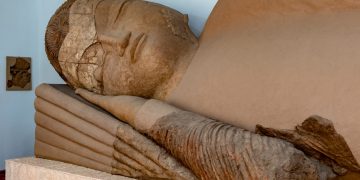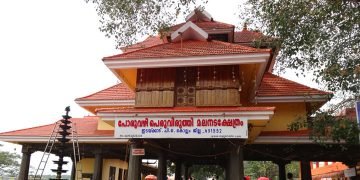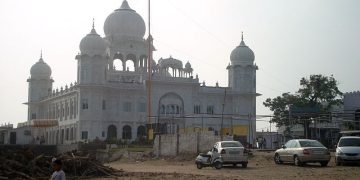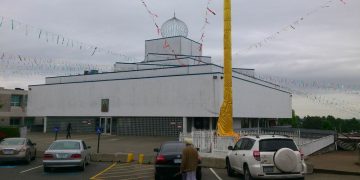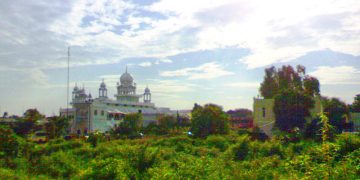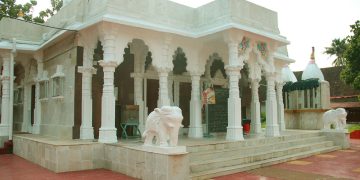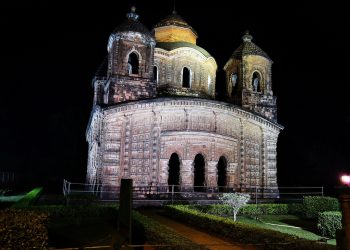Annamalaiyar Temple is a Hindu temple dedicated to the deity Shiva, located at the base of Annamalai hills in the town of Thiruvannamalai in Tamil Nadu, India. It is significant to the Hindu sect of Saivism as one of the temples associated with the five elements, the Pancha Bhoota Stalas, and specifically the element of fire, or Agni. Shiva is worshipped as Annamalaiyar or Arunachaleswarar and is represented by the lingam, with his idol referred to as Agni lingam. His consort Parvati is depicted as Unnamulai Amman.
Shrine’s History
The present masonry and towers date back to the 9th century CE, as seen from an inscription in the structure made by Chola kings who ruled at that time. Further inscriptions indicate that before the 9th century, Tiruvannamalai was under the Pallava Kings, who ruled from Kanchipuram. The 7th century Nayanar saints Sambandar and Appar wrote of the temple in their poetic work, Tevaram. Sekkizhar, the author of the Periyapuranam wrote that both Appar and Sambandar worshipped Annamalaiyar in the temple.
The Chola Kings ruled over the region for more than four centuries, from 850 CE to 1280 CE, and were temple patrons. The inscriptions from the Chola king record various gifts like land, sheep, cow and oil to the temple commemorating various victories of the dynasty. The Hoysala kings used Tiruvannamalai as their capital beginning in 1328 CE.
There are 48 inscriptions from the Sangama Dynasty (1336?1485 CE), 2 inscriptions from Saluva Dynasty, and 55 inscriptions from Tuluva Dynasty (1491?1570 CE) of the Vijayanagara Empire, reflecting gifts to the temple from their rulers. There are also inscriptions from the rule of Krishnadeva Raya (1509?1529 CE), the most powerful Vijayanagara king, indicating further patronage. Most of the Vijayanagara inscriptions were written in Tamil, with some in Kannada and Sanskrit. The inscriptions in the temple from the Vijayanagara kings indicate the emphasis on administrative matters and local concerns, which contrasts the inscriptions of the same rulers in other temples like Tirupathi.
The majority of the gift related inscriptions are for land endownments, followed by goods, cash endowments, cows and oil for lighting lamps. The town of Tiruvannamalai was at a strategic crossroads during the Vijayanagara Empire, connecting sacred centres of pilgrimage and military routes.There are inscriptions that show the area as an urban centre before the precolonial period, with the city developing around the temple, similar to the Nayak ruled cities like Madurai. During the 17th century CE, the temple along with the Tiruvannamalai town came under the dominion of the Nawab of the Carnatic. As the Mughal empire came to an end, the Nawab lost control of the town, with confusion and chaos ensuing after 1753. Subsequently, there were periods of both Hindu and Muslim stewardship of the temple, with Muraru Raya, Krishna Raya, Mrithis Ali Khan, and Burkat Ullakhan besieging the temple in succession. As European incursions progressed, Tiruvannamalai was attacked by French Soupries, Sambrinet, and the English Captain Stephen Smith.
While some were repelled, others were victorious. The French occupied the town in 1757, and the temple along with the town came under the control of the British in 1760. In 1790 CE, Tiruvannamalai town was captured by Tippu Sultan, who ruled from 1750?99 CE. During the first half of the 19th century, the town along with the temple came under British rule.
From 1951, under the provision of the Hindu Religious and Charitable Endowments Act, the temple has been maintained by the Hindu Religious and Endowment Board (HR &CE) of the Government of Tamil Nadu. In 2002, the Archaeological Survey of India declared the temple a national heritage monument and took over its stewardship. Widespread protests and litigation with the Supreme Court of India, however, led the Archaeological Survey to cede the temple back to the Hindu Religious and Endowment Board.

Legends Associated with This Shrine
In Hindu mythology, Parvati, wife of Shiva, once closed the eyes of her husband playfully in a flower garden at their abode atop Mount Kailash. Although only a moment for the gods, all light was taken from the universe, and the earth, in turn, was submerged in darkness for years. Parvati performed penance along with other devotees of Shiva. Then her husband appeared as a column of fire at the top of Annamalai hills, returning light to the world.
He then merged with Parvati to form Ardhanarishvara, the half-female, half-male form of Shiva. The Annamalai, or red mountain, lies behind the Annamalaiyar templeand is associated with the temple of its namesake. The hill is sacred and considered a lingam, or iconic representation of Shiva, in itself. Another legend is that once, while Vishnu and Brahma contested for superiority, Shiva appeared as a flame, and challenged them to find his source.
Brahma took the form of a swan and flew to the sky to see the top of the flame, while Vishnu became the boar Varaha, and sought its base. The scene is called lingothbava and is represented in the western wall at the sanctum of most Shiva temples. Neither Brahma nor Vishnu could find the source, and while Vishnu conceded his defeat, Brahma lied and said he had found the pinnacle. In punishment, Shiva ordained that Brahma would never have temples on earth in his worship.

Architectural Relevance of This Shrine
The temple is situated at the bottom of the Annamalai hills, and faces east, lying over 25 acres. The walls on the east and west measure 700 ft , the south 1,479 ft , and the north 1,590 ft (480 m). It has four gateway towers, the gopuram, on its four sides. The eastern tower, the Rajagopuram, is the tallest in the temple. The base of the Rajagopuram is made of granite, measuring 135 ft by 98 ft . It was begun by king Krishnadevaraya of the Vijayanagara dynasty and completed by Sevappa Nayaka . The inscriptions indicate that the tower was built at the behest of Sivanesa and his brother Lokanatha in 1572 CE.
The south tower is called Thirumanjangopuram, and the west, Pei Gopuram. Ammani Ammal, a Sanyasini, built the north tower which carries her namesake. Raghunathabhyudayam and Sangita Sudha, both Nayak scriptures, also describe the towers. The Thanjavur Andhra Raja Charitamu mentions that Krishnadevaraya built the tower and the outer precincts of the temple. The temple has a total of five precincts each of which holds a huge Nandi, the sacred bull of Shiva. Towers include the Vallala Maharaja Gopuram and Kili Gopuram, or Parrot Tower.
Shrine’s Map Location and How to Go There
By Road
Tiruvannamalai Bus Stand at 1.5 Kms distance.
By Rail
Railway Station : Tiruvannamalai railway Station at 2 Kms distance.
By Air
Pondicherry Airport at 103 Km.
Shrine Timings
TIMINGS POOJA 5.30 A.M. Ukshakala 8.00 A.M. Kala santhi 11.30 A.M. Uchikala 5.30 P.M. Sayaratchai 7.30 P.M. Irandam Kala 9.00 P.M. Arthajama
Events Celebrated at This Shrine
SL.NO Tamil Month Festival Details 1 Chithirai (April – May) Chitirai Vasantha urchavam 10 days. 2 Vaikasi (May – June) Vaikasi Urchavam 1 day. 3 Ani (June – July) Ani Bramorchavam 10 days. Ani Thirumanjanam 1 day. 4 Adi (July – August) Adi Pooram Bramorchavam 10 days. 5 Avani (August – Sept.) Avani Moolam Urchavam 1 day. 6 Puratasi (Sept. – Oct.) Navarathri Urchavam 9 days. 7 Aippasi (Oct. – Nov.) Annabisheka Urchavam 1 day. Kanda Sashti urchavam 6 days. 8 Karthigai (Nov. – Dec.) Karthigai Deepa Bramorchavam 17 days. 9 Margazhi (Dec. – Jan.) Vaikunda Ekadasi Urchavam 1 day. Arudra Darisanam 1 day. 10 Thai (Jan. – Feb.) Uthrayana Punyakala Bramorchavam 10 days. Thiruvoodal Urchavam 1 day. Manalurpettai Theerthavari Urchavam 1 day. Kalasapakkam (Rathasapthami). Theerthavari Urchavam 1 day. 11 Masi (Feb. – March) Maha Sivarathri Urchavam Masi Makam Pallikondpattu Theerthavari Urchavam. 12 Panguni (March – April) Panguni Uthiram Thirukalyana Urchavam 6 days.



